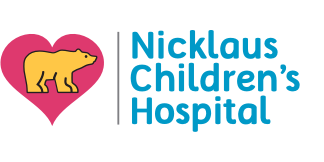- Parents Home
- Para Padres
- Allergy Center
- Asthma Center
- Cancer Center
- Diabetes Center
- Diseases & Conditions
- Doctors & Hospitals
- Emotions & Behavior
- First Aid & Safety
- Flu Center
- Food Allergy Center
- General Health
- Growth & Development
- Heart Health
- Homework Help Center
- Infections
- Newborn Center
- Nutrition & Fitness Center
- Play & Learn Center
- Pregnancy Center
- Q&A
- Recipes
- School & Family Life
- Sports Medicine Center
- Videos
- Kids Home
- Para Niños
- Asthma Center
- Cancer Center
- Diabetes Center
- Feelings
- Getting Help
- Health Problems
- Health Problems of Grown-Ups
- Heart Center
- Homework Center
- How the Body Works
- Illnesses & Injuries
- Kids' Medical Dictionary
- Movies & More
- Nutrition & Fitness Center
- Puberty & Growing Up
- Q&A
- Recipes & Cooking
- Relax & Unwind Center
- Stay Safe Center
- Staying Healthy
- Staying Safe
- Videos
- Teens Home
- Para Adolescentes
- Asthma Center
- Be Your Best Self Center
- Cancer Center
- Diabetes Center
- Diseases & Conditions
- Drugs & Alcohol
- Expert Answers (Q&A)
- Flu Center
- Homework Help Center
- Infections
- Managing Your Medical Care
- Managing Your Weight
- Nutrition & Fitness Center
- Recipes
- Safety & First Aid
- School & Work
- Sports Center
- Stress & Coping Center
- Videos
- Your Body
- Your Mind
A to Z: Astrocytoma
May also be called: Pilocytic Astrocytoma, Fibrillary Astrocytoma, Anaplastic Astrocytoma, Glioblastoma Multiforme
An astrocytoma (as-troh-sy-TOE-muh) is a brain tumor that originates from a star-shaped brain cell known as an astrocyte.
More to Know
Astrocytes are the most common type of cell in the central nervous system. They perform many essential roles and make up the supportive tissue of the brain. When there is a defect in an astrocyte that causes it to grow out of control, the brain tumor that forms is called an astrocytoma.
Astrocytomas come in four major subtypes: pilocytic astrocytoma (grade 1), fibrillary astrocytoma (grade 2), anaplastic astrocytoma (grade 3), and glioblastoma multiforme (grade 4).
Low-grade astrocytomas (grades 1 and 2), seen more often in kids and young adults, are highly curable because they usually grow slowly, don't spread, and usually are fairly easy to remove unless found in areas where surgery would be difficult. After surgery, there's a chance that chemotherapy or radiation won't be needed.
High-grade astrocytomas (grades 3 and 4), which tend to be seen more in adults, are more aggressive and invade deeper into the tissues. This makes them more difficult to treat. Treatment usually includes surgery, chemotherapy, and radiation.
Keep in Mind
Treatment for brain tumors is getting better all the time, but a lot depends on the location of the tumor. Astrocytomas that can be completely removed surgically are much more likely to be cured, while those that can't be completely removed are, in general, less curable.
All A to Z dictionary entries are regularly reviewed by KidsHealth medical experts.

© 1995- The Nemours Foundation. KidsHealth® is a registered trademark of The Nemours Foundation. All rights reserved.
Images sourced by The Nemours Foundation and Getty Images.

